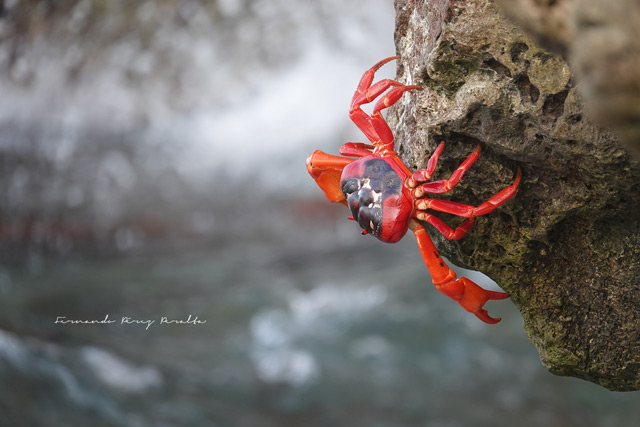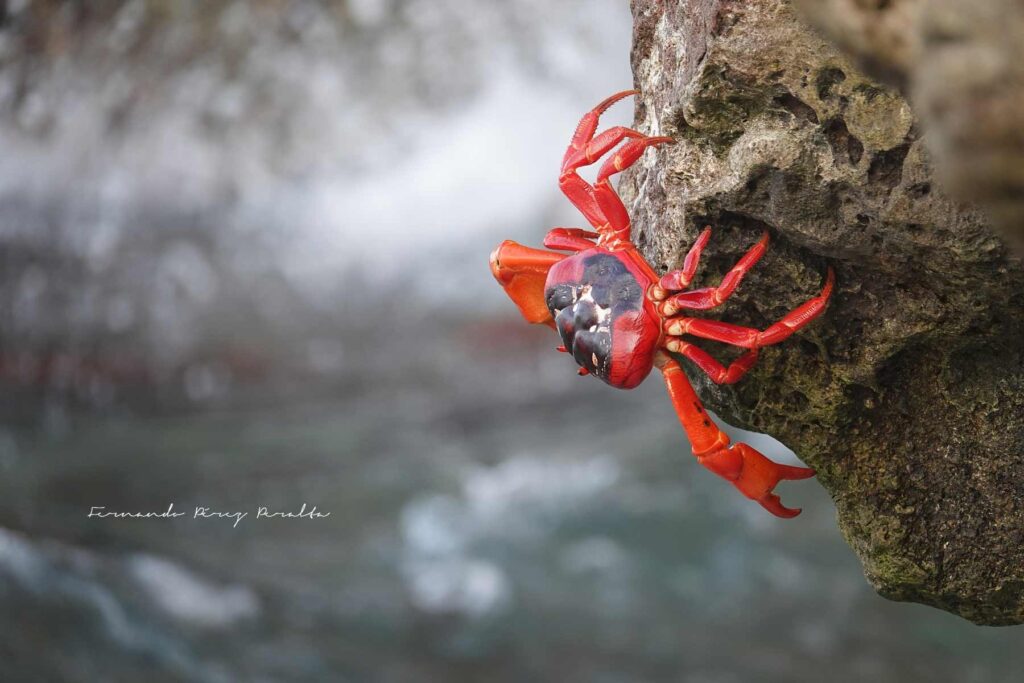At the start of the wet season, between October and December, the unique Christmas Island Red Crabs start their annual migration. Forty million of them pack their bags and travel to the coast from their rain forest homes. The first to set off are the males living furthest inland. They are joined by more and more crabs as the march progresses towards the sea.

Christmas Island Red Crab with eggs – photo credit: Christopher Andrew Bray, CC-BY-SA-4.0
Christmas Island is nearly 1500 miles away from its Australian parent, and is closer to Indonesia. The diving is great there, but it’s the crabs that attract people.

Christmas Islanders have built bridges to help the migrating Red Crabs – photo credit: Alex Cairns, CC-BY-SA-4.0
The crabs make the journey to spawn – dropping their eggs into the sea. This happens before sunrise on a spring tide during the last quarter of the moon. The crabs walk in straight lines, but not to the nearest coast: most travel towards the northwest shore. They can walk over 14 km a day, but 680 m is more common. When rains are late the crabs rush to seaside. If not then they linger for up to a week on the way to feed. This behaviour implies that the crabs are able to judge how far away they are from the shore during the migration.

When they reach the coast, after a dip in the sea the males dig a burrow for mating. After mating the males again immerse themselves in the water before the long walk home.
The females stay in the burrows, brooding their eggs for a couple of weeks. When the time is right, at high tide they jettison their eggs into the sea then make the return trip.

The eggs immediately hatch into larvae which grow into tiny animals called megalopae. After about a month these emerge from the ocean and moult into baby crabs. Four years later these crabs will repeat the migration and the cycle begins again.

Christmas Island Red Crab megalop – photo credit: Christopher Andrew Bray, CC-BY-SA-4.0
Some years hardly any baby crabs make it out of the sea. Whale sharks and manta rays feast on them and few escape. Every so often though massive numbers survive.

Photo credit: Tim Nicholson
Phylum: Arthropoda > Sub-Phylum: Crustacea > Class: Malacostraca > Subclass: Eumalacostraca > Order: Decapoda > Species: Gecarcoidea natalis
Further Reading and References
Agnieszka M. Adamczewska and Stephen Morris Ecology and Behavior of Gecarcoidea natalis, the Christmas Island Red Crab, During the Annual Breeding Migration, The Biological Bulletin 200, no.3 (Jun 2001).
Red crabs and migration | Christmas Island National Park, Australian Government
